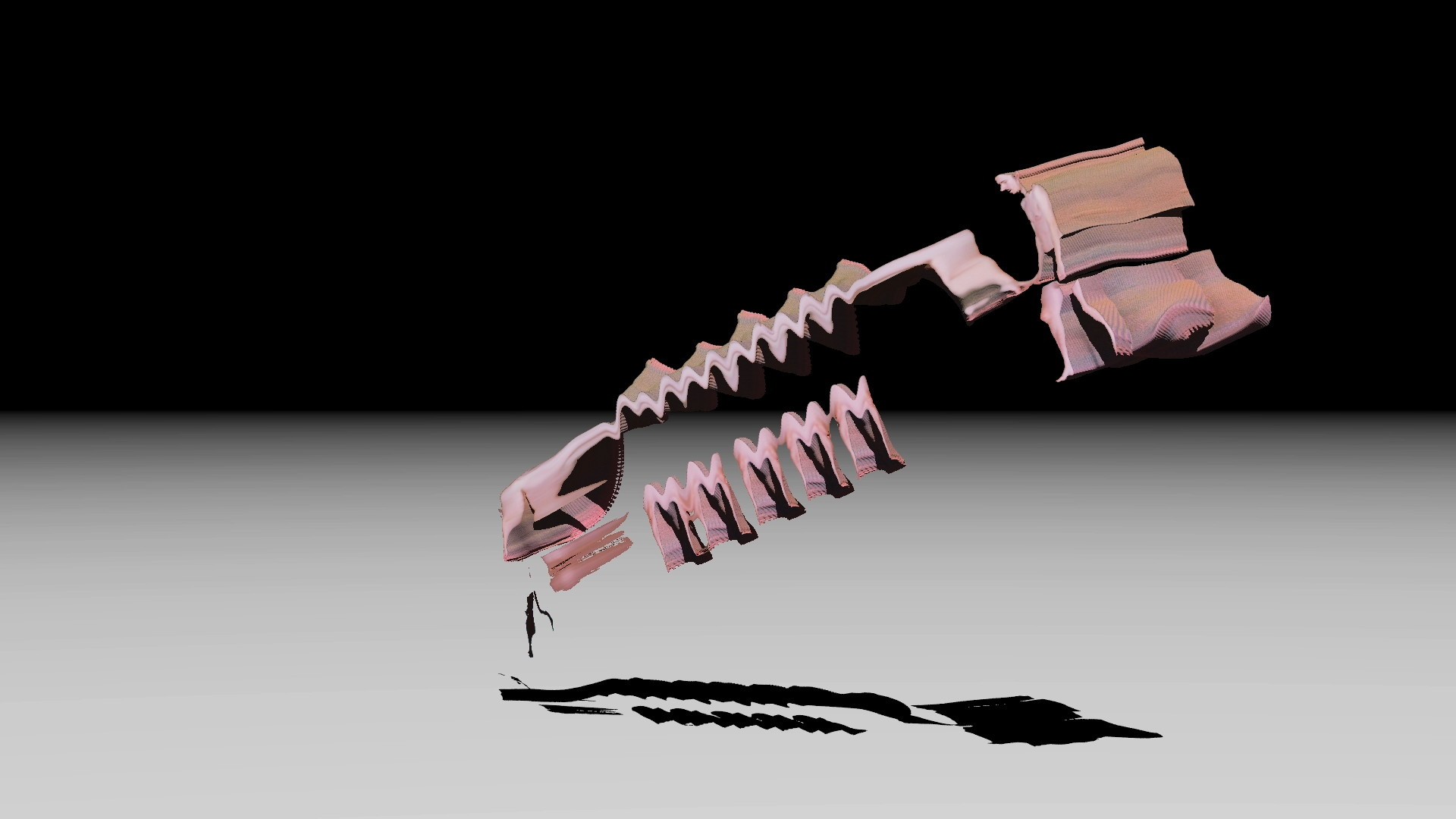If you can’t watch in proper 3D, 2D is preferable over Anaglyph ¹
Photo sculpture, rapiscan, workout surface graph, vitruvian ghost, tomographic sausage, ball joint and spinal cord, tourniquet and hollow needle, virtual double doppelganger in the fractal mausoleum.
The fact that your own body is a threedimensional body seems obvious, but is usually only noticed under special circumstance: when you lose control over your motor skills, when you measure yourself or are measured for purposes of control, when injured, when mapped into virtual spaces. I undergo a series of experiments to study this condition.
I use experimental stereoscopic visualization techniques to contrast real and computer generated footage. Watching the projection through 3D glasses, from close distances highlights the physicality of vision and pits 3D cinema’s hyper-real body against your own.
During production I did not use neither dedicated 3D cameras or software, opting for a plethora of self-developed, ab-used, hacked and re-combined tools and devices.
Chapter notes
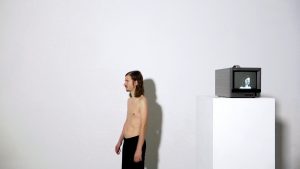
A play on early so called photo sculpture, or “rotational photogrammetry”, a reversal of the Pulfrich effect: rotation of the subject and delay of the image for one eye, while carefully balancing rotation speed and delay, effectively creates distinct, but actually converging viewing angles for both eyes – but only in the area where there is rotation; the still backdrop remains flat and resides at image plane level and creates a surrounding flatness which seems “too near”.
The rotation of the (live) subject (yours truly) affects its cochlea.
The self-portrait mesh was obtained by rotating the camera around the subject – by walking, a play on the stereo-photographical “cha-cha” technique. Poor input data and consumer-level cloud-processing results in severe glitches.
The particular pose, posing in the nude as well as the texture taken from my passport recalls airport security, where the scanners’ poor imaging quality renders them to merely a machine of asserting power through intimidation on the assumption of objectivity.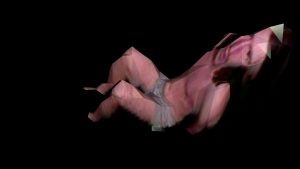
Forcing the comparatively high-resolution video texture on a low resolution depth map visualizes the “harshness” of digitalization, its rough edges. Creaky floors and facial expressions of exhaustions have no place in the sanitized, quantified digital chimes which count, document and reward your physical activities.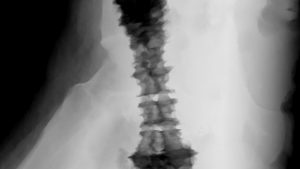
As an anti-thesis to the last, analytical, chapter this technique integrates every bit of data. By interpreting every pixel as a voxel, and time as another spatial dimension, 2D video becomes 3D space, the jumping jack a meaty sausage, which can be disected, measured and analized with medical software for tomography.
X-rays are a photographical process where the thin slice of the focal plane is (inductively, injectively) interpreted as volumes.
By simple extrusion I create an imaginary, vastly different anatomy which, through the lens and projection of x-rays, would still yield the exact same image.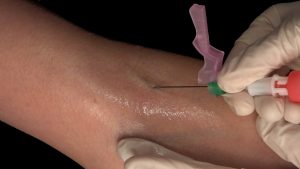
The closest to classic stereo-photography, the setup uses two camera, but at an unnaturally steep angle, producing a hyper-stereo image, which puts palpable stress on the eyes muscles. The minimal gore of drawing blood is heightened by 3D cinema’s stylistic device of “sticking stuff right in your face”.
The needle is a curious object: by minimizing diameter it tries to become one-dimensional, while it still needs to have volume (to transport a liquid, made up of cells). It then punctures the body’s surface, revealing its interior and thus, its body-ness. The point of penetration is set at zero disparity. So it becomes the focal point where the needle, the skin, and the silver screen meet, and both of your eyes meet – unless you look away.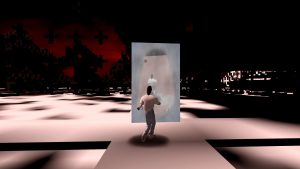
My crude avatar materializes in a pinkish dream world. On the horizon looms a chaotic heap. It’s a pyramid made of crossed beams. Climbing it proves difficult but within I find a portal which teleports me to the summit – where another avatar rests. When I take his place, he explodes. Descent from the pyramid proves perilous and I fall to death.
This chapter is “shot” in a computer game, it’s a machinima. The pyramid is procedurally generated with a simple fractal algorithm. The layout and it’s many angles – reminiscent of islamic temples – form a rough, stereoptically-optimal surface.
¹ I chose YouTube over Vimeo for its 3D features. It remains to be seen, if they are useful at all, or merely theoretical.

